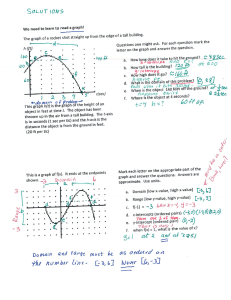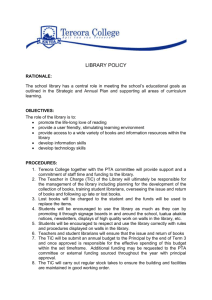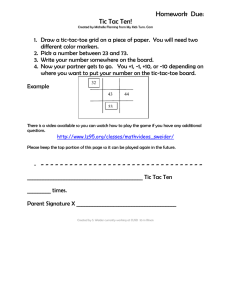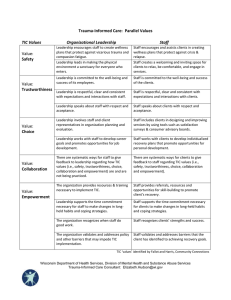The COTOR Challenge Committee on the Theory of Risk
advertisement
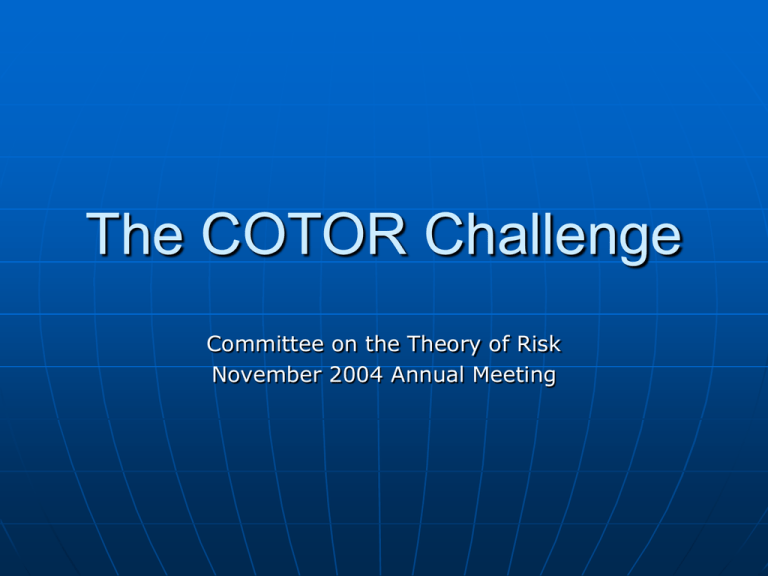
The COTOR Challenge Committee on the Theory of Risk November 2004 Annual Meeting History of the Challenge Last spring a COTOR member challenged actuarial geeks to estimate 500k xs 500k layer based on list of 250 claims Emails flew back and forth furiously A number of different approaches were used Literature about heavy tailed distributions was recommended Winner was Phil Heckman using mixture of 2 lognormals History cont. Criticism existed around the sample since some sample statistics were too far from the real distribution COTOR feels that the solution of this problem is of interest ot the actuarial community • Our data is almost never normal/lognormal • Our data is typically heavy tailed • It is likely that in many real situations, a sample of 250 claims would not represent a random draw from any distribution History cont. Another challenge was issued under well defined conditions Stuart Klugman picked the sample 250 claims randomly generated from an inverse transformed gamma Challenge was to estimate severity in the $5M xs $5M layer (mean and 95% confidence intervals) The Sample 250 claims randomly selected from an inverse transformed gamma Claim Size Count Greater than 5,000,000 1 500,000 to 1,000,000 2 100,000 to 500,000 7 50,000 to 100,000 10 25,000 to 50,000 8 10,000 to 25,000 26 5,000 to 10,000 30 2,500 to 5,000 56 1,000 to 2,500 74 500 to 1,000 32 250 to 500 4 Under 250 0 Purpose of Session Raise awareness of audience of how frequently extreme values need to be dealt with Present relatively easy to use approaches Make audience aware of how difficult this problem is to solve Normal Distribution Assumption The normal or lognormal assumption is common in finance application • Option pricing theory • Value at risk • CAPM Evidence that asset return data does not follow the normal distribution is widely available • 1968 Fama paper in Journal of the American Statistical Association Test of Normal Distribution Assumption Normal Q-Q Plot of Monthly Return on S&P 1.15 T h e o r e t i c a l V a l u e 1.10 1.05 1.00 0.95 0.90 0.85 0.8 0.9 1.0 Observed Value 1.1 1.2 1.3 Test of Normal Distribution Assumption Descriptive Statistics Monthly Return on S&P Valid N (lis twis e) N Statis tic 251 251 Mean Statis tic .9931 Std. Deviation Statis tic .04585 Skewness Statis tic Std. Error 1.410 .154 Kurtos is Statis tic Std. Error 6.081 .306 Consequences of Assuming Normality The frequency of extreme events is underestimated – often by a lot Example: Long Term Capital • “Theoretically, the odds against a loss such as August’s had been prohibitive, such a debacle was, according to mathematicians, an event so freakish as to be unlikely to occur even once over the entire life of the universe and even over numerous repetitions of the universe” When Genius Failed by Roger Lowenstein, p. 159 Criteria for Judging New and creative way to solve the problem Methodology that practicing actuaries can use Clarity of exposition Accuracy of known answer Estimates of confidence interval Table of Results Respond er Mean A 9,500.0 0 B Lower CL Upper CL Method 450.00 17,500. 00 Inverse Logistic Smoother 6,000.0 0 0.00 26,000. 00 Kernel Smoothing/Bootstrapping C 12,533. 00 2,976.00 53,049. 00 Log Regression of Density Function on large claims D 2,400.0 0 ? ? E 6,430.0 0 1,760.00 14,710. 00 Fit distributions to triple logged data. Used Bayesian approach for mean and CI F1 10,282. 00 2,089.00 24,877. 00 Scaled Pareto F2 30,601. 00 6,217.00 74,038. 00 Pareto G 4,332.6 5 297.34 7,645.8 6 Empirical Semi Smoothing Generalized Pareto Observations Regarding Results These estimations are not easy Nearly 13 to 1 spread between lowest and highest mean Only 10% of answers came within 10% of right result All responders recognized tremendous uncertainty in results (range from upper to lower CL went from 8 to infinity) Our statistical expert could not understand the description of the method of 30% of the respondents Observations All but 2 of the methods relied on approaches commonly found in the literature on heavy tailed distributions and extreme values It is clear that it is very difficult to get accurate estimates from a small sample The real world is even more challenging than this • 250 claims probably don’t follow any known distribution • Trend • Development • Unforeseen changes in environment • Consulting with claims adjusters and underwriters should provide valuable additional insights Observations The closest answer was 5% below the true mean Half of the responses below the true mean, Half were above Average response was 40% higher than the mean Average response (ex outlyer) was within 2% of the mean Read: “The Wisdom of Crowds: Why the Many are Smarter than the Few and How Collective Wisdom Shapes Business, Economics, Societies and Nations” by: James Surowiecki Implications for Insurance Companies? Speakers Meyers Evans Flynn Woolstenhulme Venter Heckman Announcement of Winners Louise Francis – COTOR Chair Possible Next Steps Make the results of the challenge available to the membership COTOR subcommittee to evaluate how to make techniques readily available Another round making the challenge more real world Include trend and development Give multiple random samples
